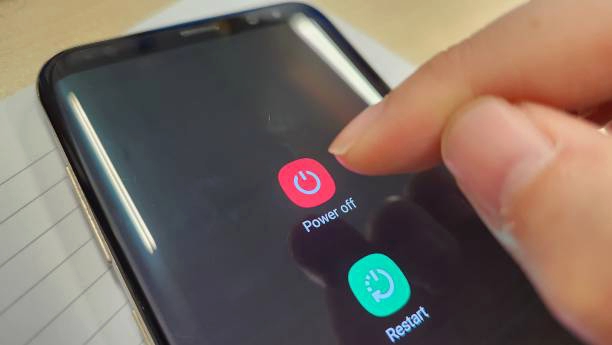How to Restart Samsung Phone

If your Samsung phone has started freezing, lagging, or acting strangely, don’t panic — sometimes all it needs is a simple restart to breathe new life into it. A quick reboot can work wonders, clearing out hidden bugs, frozen apps, and the small glitches that make your phone feel slow or unresponsive. It’s like giving your device a short nap so it wakes up refreshed and ready to perform at its best. Whether you’re fixing a stubborn app, dealing with Wi-Fi and Bluetooth issues, or just want to refresh your system, restarting your Samsung phone is often the easiest and fastest solution. And if that’s not enough, knowing how to reset or perform a full factory reset can help you solve even deeper problems and make your phone feel brand new again. In this guide, we’ll walk you through everything you need to know — from a simple reboot to a complete system reset — so your Samsung device keeps running smoothly, day after day.
Also read: How to Turn off Samsung Phone
How to Reboot a Samsung Phone
Restarting your Samsung phone is often the quickest and easiest way to fix minor glitches, frozen apps, or slow performance — and the best part is that it doesn’t erase your data or installed apps. Instead, it simply refreshes your phone’s system, clears temporary files, and gives the device a fresh start. Follow these simple steps to reboot your Samsung smartphone safely:
- Step 1 – Press and Hold the Power Button: Locate the Power (or Side) button on your Samsung device and press it for a few seconds until the power menu appears on your screen.
- Step 2 – Tap “Restart”: Once the menu pops up, you’ll see several options such as Power Off and Restart (sometimes labeled Reboot). Tap Restart to begin the reboot process.
- Step 3 – Wait for Your Phone to Restart: Your Samsung phone will automatically turn off and power back on within a few moments. This usually takes less than a minute.
If your phone’s screen is completely frozen or not responding, you can perform a force restart using a combination of hardware buttons. This method helps bring your phone back to life without deleting any of your personal data.
How to Force Reboot Your Samsung Phone Using Buttons
If your Samsung phone freezes or becomes completely unresponsive, don’t worry — you can easily bring it back to life with a force restart. This method works even when the touchscreen doesn’t respond and won’t delete any of your personal files or apps. Follow these simple steps:
- Step 1 – Press and Hold the Power and Volume Down Buttons: At the same time, press and hold the Power (Side) button and the Volume Down button. Keep holding both for about 10 to 15 seconds.
- Step 2 – Wait for the Device to Vibrate: After a few seconds, your phone will vibrate and the Samsung logo will appear on the screen. This means your device has successfully rebooted and is starting up again normally.
This quick trick is a lifesaver when your phone freezes completely. It forces the system to restart, clears temporary glitches, and restores responsiveness without losing any of your data.
Also read: how to screenshot on samsung
Back Up Your Data First
Before performing a factory reset, it’s extremely important to back up your data — otherwise, you’ll lose everything on your Samsung phone, including photos, apps, contacts, and personal files. Backing up ensures that you can easily restore your information once the reset is complete or transfer it to a new device.
If your phone is running Android 12 or newer, here’s how to back up your data safely:
- Open Settings: Go to your phone’s Settings app and tap Accounts and backup.
- Select Back up data: Under the Google Drive section, tap Back up data.
- Tap Back up now: This will immediately save your contacts, apps, messages, and settings to your Google account.
For users with older Android versions, the backup steps vary slightly depending on your software:
- Android 4.4 – 6.0.1: Go to Apps → Settings → Backup and reset.
- Android 7 & 8: Head to Settings → Cloud and accounts → Backup and restore.
- Android 9: Navigate to Settings → Accounts and backup → Backup and restore → Back up my data.
Pro Tip: You can also use Samsung Cloud or Smart Switch to back up data to another device or a PC. Doing this before a factory reset ensures you don’t lose any valuable information during the process.
How to Factory Reset a Samsung Phone
A factory reset is the most thorough way to refresh your Samsung phone when everything else fails. It completely wipes your device — removing apps, photos, media, and personal files — and returns it to the same state it was in when you first took it out of the box. This method is useful if your phone has serious software problems, keeps crashing, or you’re planning to sell or give it away. However, because it permanently deletes all your data, it’s important to back up your files before starting. Follow these steps to safely perform a factory reset on any Samsung smartphone:
- Step 1 – Back Up Your Data: Before doing anything, make sure all your important information is backed up. Use Samsung Cloud, Google Drive, or transfer your data to a computer or memory card so nothing valuable is lost.
- Step 2 – Open Settings: Swipe down from the top of your screen to open the notification panel, then tap the gear icon to access your phone’s settings.
- Step 3 – Navigate to General Management: Scroll down until you find General management, then tap to open it.
- Step 4 – Select Factory Data Reset: Tap Reset, followed by Factory data reset. You’ll see details of what will be deleted.
- Step 5 – Confirm the Reset: Review the information on the screen, then tap Reset or Delete all to proceed. You may need to enter your device PIN or password.
- Step 6 – Wait for the Process to Finish: Your Samsung phone will restart automatically and begin the reset process. Once completed, it will reboot to the initial setup screen — just like a brand-new phone.
Performing a factory reset can feel like a big step, but it’s often the best solution for deep system issues or when preparing your phone for a new user. With a proper backup and careful steps, you can restore your Samsung device to peak performance safely and easily.
Conclusion
Restarting your Samsung phone is one of the simplest yet most effective ways to fix common performance issues. Whether you’re dealing with freezing apps, network errors, or random glitches, a quick reboot often restores your device to smooth operation in seconds. And if the problem continues, performing a factory reset after backing up your data can completely refresh your phone and make it feel brand new again.
Keeping your Samsung phone in top shape doesn’t always require a technician — sometimes, all it needs is a restart. Make it a habit to reboot your device every few days to clear background processes, improve battery performance, and keep everything running fast and stable. With these simple steps, you’ll extend your phone’s lifespan and enjoy a smoother Android experience every day.
Frequently Asked Questions (FAQs)
1. How do I restart my Samsung phone when it freezes or stops responding?
If your Samsung phone suddenly freezes or stops responding completely, don’t panic — this happens sometimes due to temporary software hiccups or heavy app usage. The easiest way to fix it is to force restart the device. Simply press and hold the Power (Side) button and the Volume Down button together for about 10 to 15 seconds. You’ll feel a short vibration, and then the Samsung logo will appear. This means the phone is rebooting. Don’t worry — this method doesn’t erase your data or settings. It just forces the system to refresh and clear any small bugs that were slowing things down.
2. Will restarting my Samsung phone delete any of my files or photos?
No, restarting your Samsung phone will not delete your data. It only refreshes the phone’s internal memory and closes background processes. Think of it as giving your phone a quick “refresh” to make it faster. All your photos, apps, videos, and messages will remain safe. However, if you perform a factory reset, that’s when everything will be deleted — so make sure you back up your files before doing that.
3. How often should I restart my Samsung phone for better performance?
Restarting your phone regularly is one of those simple habits that can make a big difference. Experts recommend restarting your Samsung phone at least once every week. Doing this helps clear cached data, stops unnecessary background apps, and boosts battery life. If you notice your phone lagging, heating up, or apps crashing, restarting it more often (every few days) can help maintain top performance without needing a full reset.
4. What’s the main difference between restarting and factory resetting a Samsung phone?
A lot of people confuse these two, but they are very different. A restart simply turns your phone off and back on again — it’s like refreshing a computer. This solves minor software issues and speeds up the device.
A factory reset, on the other hand, is a complete wipe. It erases everything — all your apps, contacts, photos, and files — and returns the device to its original factory condition. It’s best used only when your phone has serious problems that a restart can’t fix, or when you’re selling or giving away the phone. Always back up your data before doing a factory reset.
5. How do I back up my Samsung phone safely before performing a factory reset?
Backing up your data is very important before doing a reset. To do this, go to Settings → Accounts and backup → Back up data, then choose Back up now under the Google Drive section. This will automatically save your contacts, apps, photos, messages, and system settings to your Google account.
If you prefer Samsung’s own tools, you can use Samsung Cloud or Smart Switch to transfer your files to another device or a computer. This ensures you won’t lose anything important when you restore or set up your phone again after the reset.
